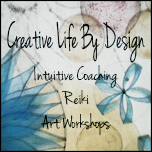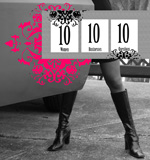Matisse Monday: It's All About Process
 Monday, April 11, 2011 at 02:05PM
Monday, April 11, 2011 at 02:05PM {This is the second post in a series dedicated to Henri Matisse during Matisse Month, a self-learning experiment dedicating the month of April to the study of Matisse. As always, I invite you to take what you like and leave the rest. For the first post click here.}
La Blouse Roumaine, Henri Matisse, 1940
I have no art-making process except maybe the absence of a process.
I seem to function well on intuition and when I go to the table, I "see what comes." Usually when I try to paint something specific it just. doesn't. work. And I scratch my head wondering how the heck others do it?
With this in mind, I particularly enjoyed reading about Matisse's art-making process. Here are four things he did that I'd like to try*:
Reproduce emotion vs. reality: Matisse painted what he saw in front of him not necessarily as reality, but as it made him feel. Whether a still life or a nude, he painted the emotion it evoked within him rather than aiming to reproduce his subject as it was objectively visible to the naked eye.
"I put a bouquet on the table and I'd like, once the painting complete, that a gardener might be able to recognize each variety of flower; but I don't know what happens in the process, they become young girls, dancing."
~ Henri Matisse (quote translated by yours truly)
Use sketches and small scale paintings as precursors to bigger work: Matisse performed "études" - line drawings, colour studies, paper cutouts and sketches - before creating a major work. When working on his dancer series he did hundreds of sketches to study movement and line.

Danseuse, Henri Matisse, 1930-1931
Embrace re-work and practice patience: When painting La Blouse Roumaine (above) Matisse took fourteen photographs of his work in progress over nine months, depicting how he eliminated detail to come up with the essential for this piece. This absolutely floored me, to the point where I may have gotten a bit over-enthused and forced not only my husband, but my colleagues to listen to me describe how incredibly amazing this was. (Sorry guys!)
six of the fourteen photos, from the lovely little French book
Emulate or seek inspiration from the masters: In the beginning Matisse emulated and sought inspiration from masters that came before him like Davidsz de Heem, Chardin and Cézanne. Then he started giving those pieces his own twist. Apparently copies were good business back then too, he sold copies to fatten the art-making coffers!
So to recap...
- Reproduce emotion vs. reality
- Use sketches and small scale paintings as precursors to bigger work
- Embrace re-work and practice patience
- Emulate or seek inspiration from the masters
I don't expect I'll be tackling all of these immediately, but I do believe that picking these four approaches out of the pack and writing about them here will make them accessible to my creative psyche.
And really, that's what this little learning experiment is all about.
* The main reference for this post is a lovely little book on Matisse and some of his chosen pieces by Anette Robinson. The version I have is in French; I'm not sure if an English version of the book is available.
 Steph |
Steph |  3 Comments |
3 Comments |  Experiments,
Experiments,  Matisse,
Matisse,  Self-learning
Self-learning Follow me on Twitter and Facebook. Join the mailing list.








Reader Comments (3)
I love this post! I think we can learn so much from artists that have come before. We seem to have this idea that everything comes to them as a finished masterpiece, that they have it all figured out, but your study shows it's not true. Thanks so much for sharing!
"We seem to have this idea that everything comes to them as a finished masterpiece, that they have it all figured out"
That's exactly how I felt Kat! Which probably explains why I'm so fascinated by the amount of work and study involved in his paintings. It's encouraging, in a way. :)
I absolutely love learning about artist's processes. I think it's really great for us all to understand that a lot of hard work and a lot of soul goes into the work, rather than thinking that it is just plucked from thin air.